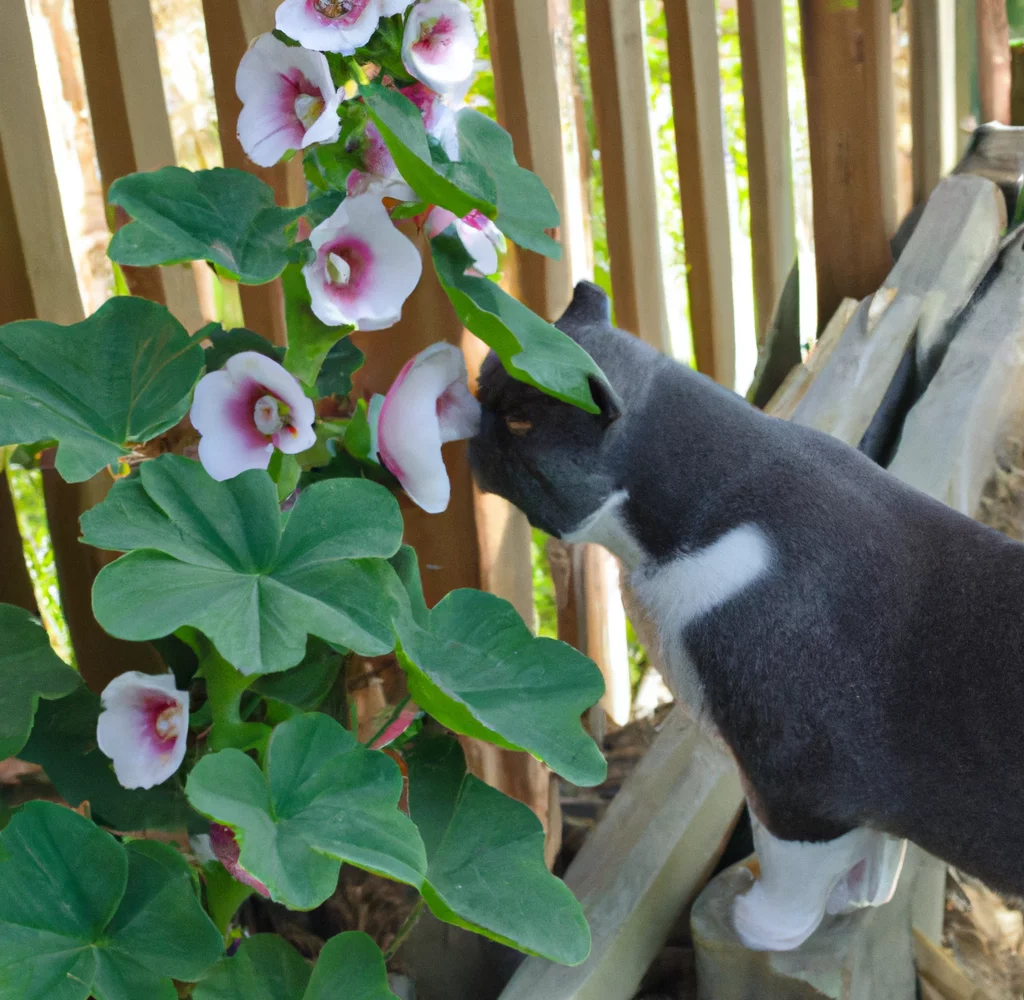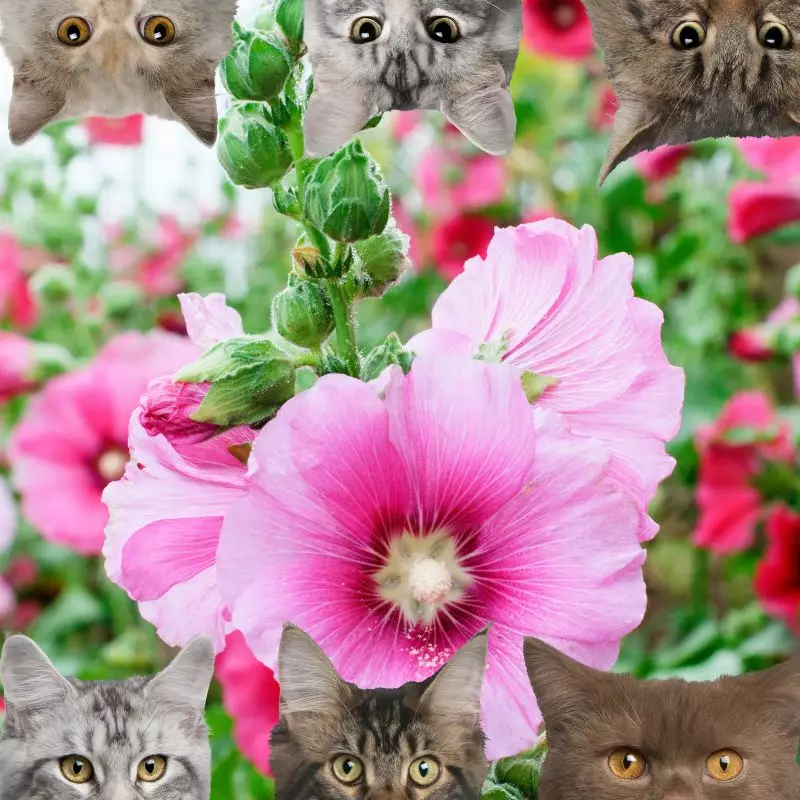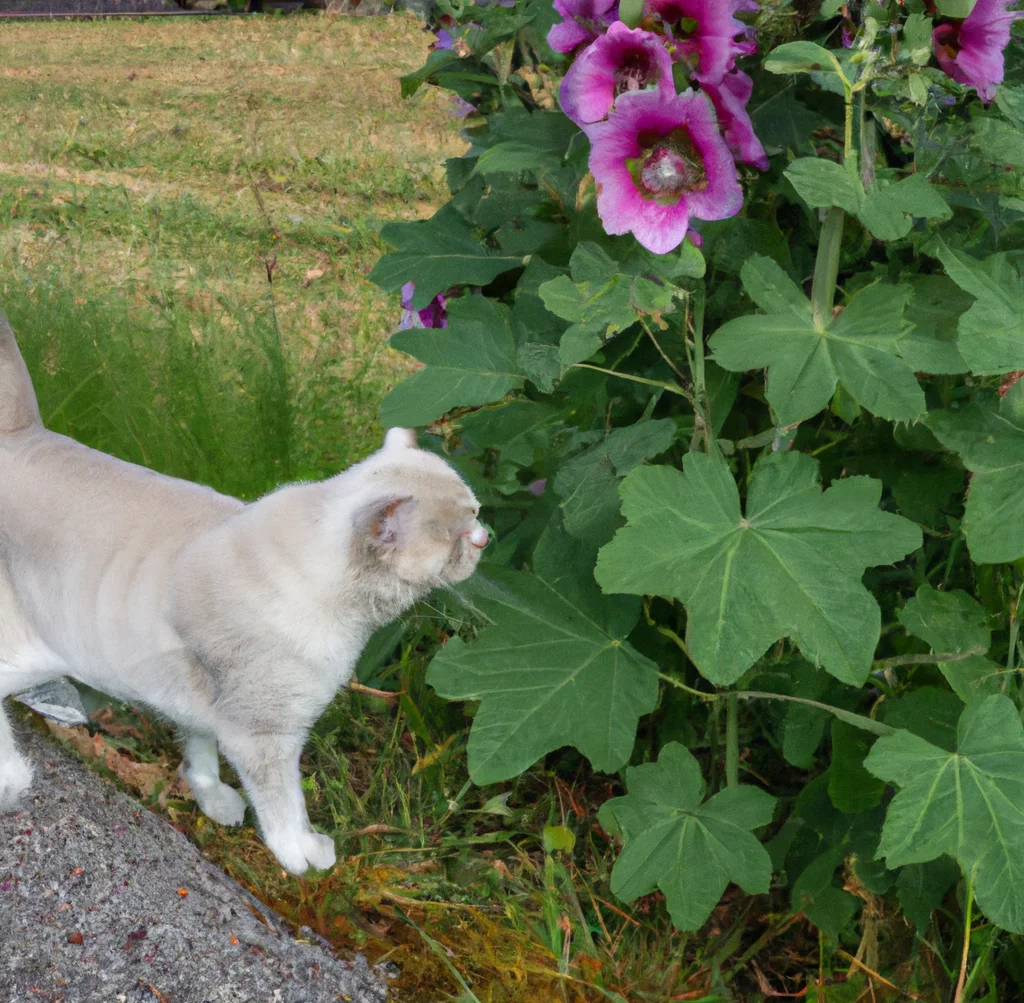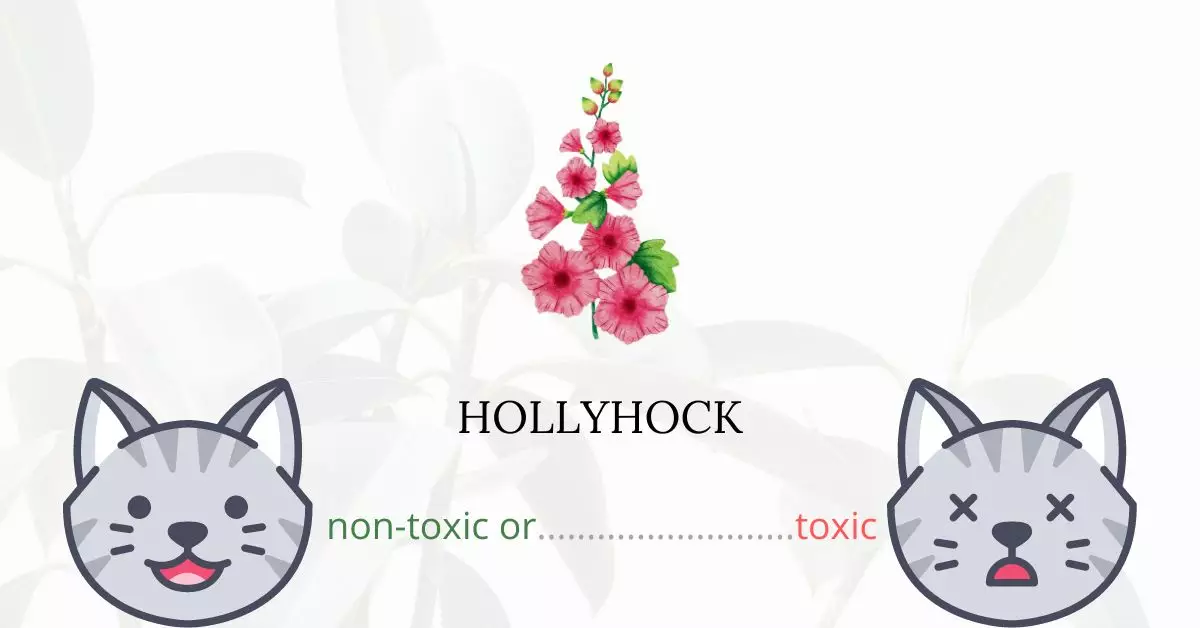Hollyhocks are not considered toxic to cats. While it is safe to have hollyhocks in areas frequented by cats, it doesn’t imply that these plants should be a part of a cat’s diet.
In collaboration with a team of experienced DVMs (doctors of veterinary medicine), we have thoroughly researched and cross-referenced the effects of various plants, including hollyhocks, on cats. We’ve further validated our findings with reputable sources such as the ASPCA (American Society for the Prevention of Cruelty to Animals) and PetMD.
According to the ASPCA, hollyhocks are non-toxic not only for cats but also for horses and dogs. Still, it’s essential to understand that many plants might not be suitable for ingestion by cats, a topic we will delve deeper into in this article.
Can Cats Eat Hollyhock?

Cats are obligate carnivores thus, they are not created to have enzymes that can digest plant materials in their stomach. Since it is tough for them to process plant matter, eating large quantities of plants may cause cats to have indigestion.
Symptoms such as vomiting and mild diarrhea may occur but you do not have to panic as these symptoms will eventually subside once the plants are out of the cat’s system.
As we usually remind our fellow cat parents, chemicals that are used on plants such as fertilizers, pesticides, and the like, may cause toxicity to cats. It is important to be careful in using products on your plants. Only use natural products as much as possible.
What is Hollyhock?

Hollyhocks, or Alcea rosea, are herbaceous blooming plants that self-seed and can establish colonies of plants that return to the yard year after year. They are most commonly seen in farmed regions and only rarely in “the wild.” The plant’s native environment is unclear, however, it is most likely a cultigen that originated in Turkey.
It is a beautiful plant with blooms that resembles poppies and range in color from lavender to scarlet to yellow. The blooms grow on hard, towering spikes five to eight feet tall and are typically self-supporting. From June through August, the plant is in full flower.
Hollyhock loves full to partial light, a thick, rich, organic soil, and seeds that are sowed in late summer or early fall will bloom the following summer. The plant can handle a broad range of soil conditions and some mild shade, but not damp winter soils.
Keeping Cats Away From Hollyhock

It is critical to keep your cats away from your houseplants for the sake of both your plants and your cats. It will not only keep your cats from eating your plants, but it will also save your plants from being harmed due to your cat’s curiosity.
The majority of pet owners use deterrents to keep their pets away from plants. As previously said, use these items with caution. To avoid cat intoxication, use natural deterrents for your plants. Before applying a product to your plants, always read the label.
Plants to Avoid For Your Cats
If you are a cat owner and unsure if the plants growing in your yard are harmful to your cats, check out this list of toxic plants for cats. You can also check our list of non-toxic plants for cats.





